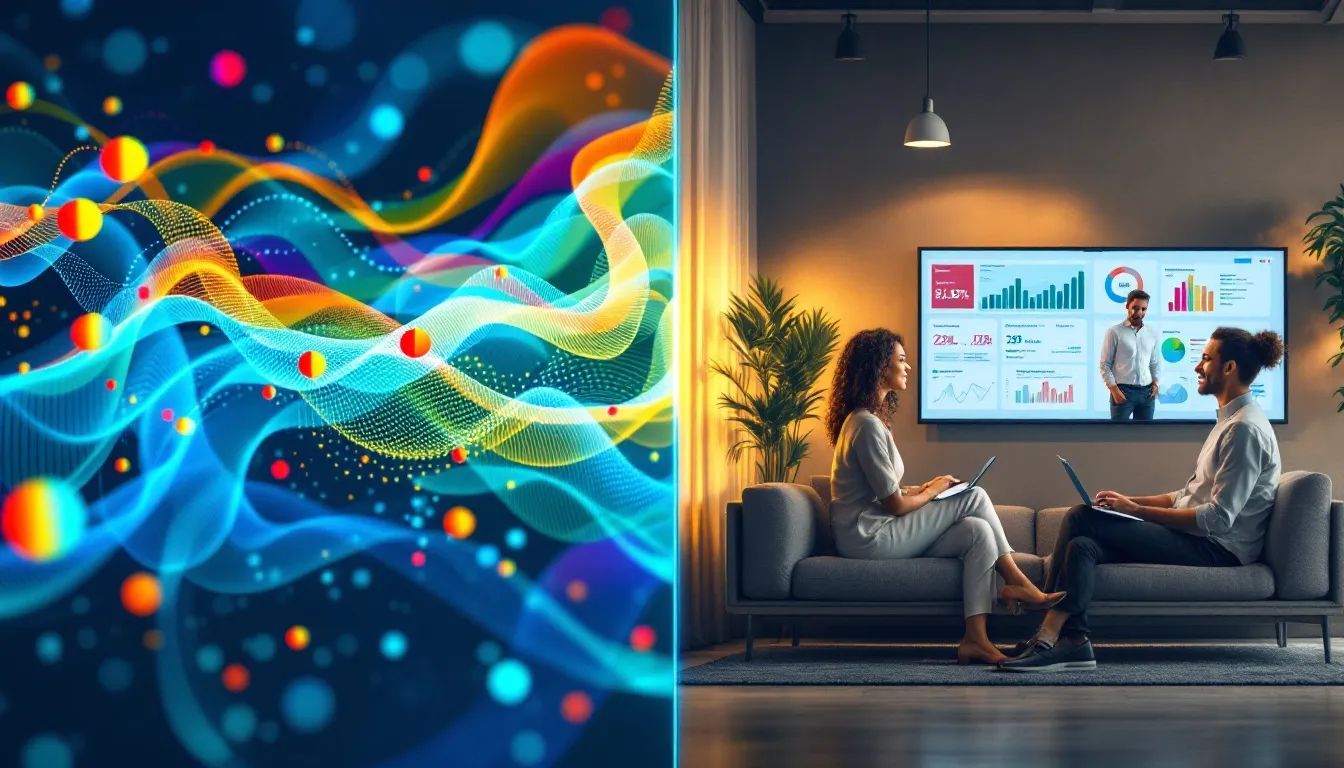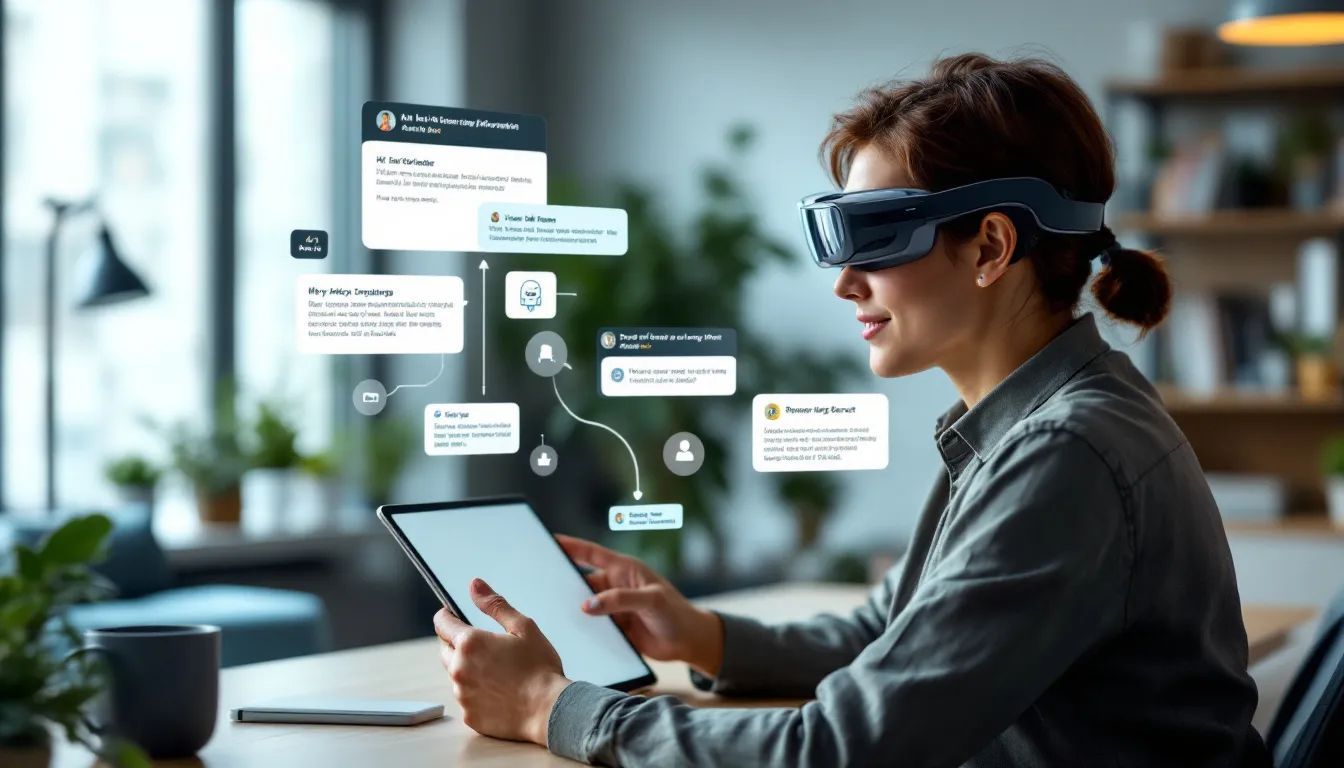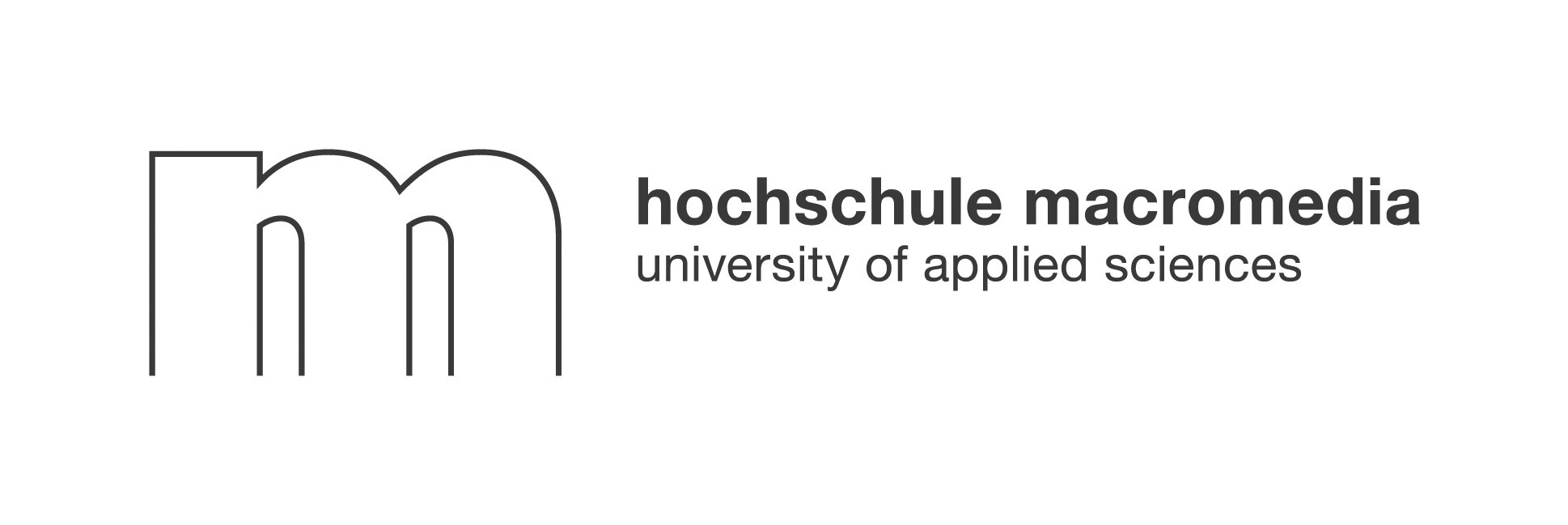As the workplace continues to evolve, the synergy between technology and human connection is creating vibrant and fulfilling experiences. Early in this discussion, you learn how AI for employee engagement transforms every aspect of the workplace. Organizations are turning to smart systems to understand behavior, tailor solutions, and build genuine connections. As you read on, discover how these innovative approaches turn traditional routines into dynamic, personalized experiences that benefit both employees and employers.
Introduction: The Rise of AI for Employee Engagement
The modern workplace is changing. Companies have moved from annual performance reviews and rigid training programs to environments that encourage real-time responses and personalized growth opportunities. At the very heart of this evolution is AI for employee engagement. This technology continuously gathers feedback, monitors progress, and recommends actions to ensure employees feel appreciated and understood.
Today’s leaders know that relying on outdated methods leads to forced formats and uninspired company events. Instead, workers seek organic, tailor-made interactions that celebrate their contributions and foster collaboration—even in remote and hybrid settings. As you explore this article, consider how improved processes can break silos and drive employee well-being.
Embracing technology does not dehumanize the workplace; it enhances our capacity for connection.
In this era of digital transformation, the rise of intelligent systems provides a bridge between human intuition and technological precision.
Understanding the Transformation
Understanding the evolution of workplace interactions is key. AI for employee engagement plays a central role in transforming how managers and employees interact by providing real-time insights and creating tailored activities for each individual. Modern organizations no longer rely solely on traditional events designed for large groups. Instead, they are replacing impersonal gatherings with dynamic, small-group micro-events that respect personal interests and hybrid work realities.
Organizations have begun to embrace personalized moments over generic meetings. They are showing that engagement stems from understanding each employee’s needs. This shift is partly driven by advances in machine learning and natural language processing, which reveal insights previously hidden in large amounts of employee data.
Smart systems now blend data analysis with human-centric recommendations to create personalized work experiences. The continuous improvement of these tools enhances communication, uplifts morale, and reduces burnout. They perform well in scenarios where routine check-ins or scheduled training sessions once fell short. This transformation is not just about speed or efficiency—it’s about crafting authentic connections that resonate with employees on a personal level.
Personalization leads to empowerment and higher performance.
Furthermore, these innovations help in setting clear expectations and building environments where authentic interactions thrive. They recommend small-group activities based on interests such as sports, wellness, and cultural events, making work feel more like a community rather than a series of isolated tasks.
Predictive Analytics: Diagnosing Employee Disengagement
Predictive analytics represents a revolutionary tool in managing the employee experience. By harnessing the power of AI for employee engagement, organizations tap into data signals that indicate early signs of disengagement, stress, or burnout. This preventive approach combines vast data sets with intelligent analysis to diagnose issues before they turn into larger problems.
When employees feel unheard, the risk of turnover increases significantly. Advanced analytical systems monitor attendance, participation, and feedback to provide a snapshot of the workforce’s overall sentiment. By spotting trends early, leaders can formulate timely interventions that address the root causes of disengagement rather than merely its symptoms.
Uncovering Trends with Data

Within the realm of data, subtle shifts in mood or performance can be pivotal. For instance, if an employee’s involvement in meetings declines or if feedback surveys show a subtle drop in enthusiasm, the system flags these indicators. In one striking example, a manager might notice a drop in team participation during cross-department collaborations. Data analysts then suggest looking into potential workload issues, communication gaps, or even the need for a personalized motivational session.
A key strength here lies in the system’s ability to identify patterns that the human eye may overlook. These insights foster proactive decision-making and help build an atmosphere where every employee is acknowledged as a valued contributor to the organization’s success.
- Early signs can include slight variations in meeting engagement.
- Sudden drops in survey scores can signal deeper issues.
- Repeated patterns of absence or delayed responses offer crucial hints.
- Shifts in performance trends lead to timely conversations.
Data tells the story of employee well-being before problems arise.
Early Intervention Strategies
Early intervention strategies rely on these actionable insights. Instead of waiting for a full-blown crisis, managers receive automated suggestions to address emerging issues. While traditional HR practices might miss these early signals, advanced analytics offer a targeted approach to reigniting enthusiasm at work.
Intervention measures may include personalized check-in meetings, adjustments to workloads, or recommending micro-events that align with employees’ interests. Importantly, these systems encourage a culture of continuous feedback, where solutions are both data-driven and empathetically delivered. Organizations now champion a safe space where teamwork and innovation merge—a culture that thrives on agile responses and real-time communication.
Timely actions pave the way for a supportive, thriving workplace.
Enhancing Communication with AI-driven Chatbots and Virtual Assistants
Communication is the lifeblood of effective employee engagement. With the rise of smart assistants, everyday workplace interactions have taken on a more personal and responsive tone. AI-powered chatbots and virtual assistants serve as constant companions—providing 24/7 support, quick answers, and guidance.
In this context, AI for employee engagement finds another meaningful application. These advanced systems help streamline interactions by instantly addressing employee queries related to HR policies, benefits, or even day-to-day schedule adjustments. Traditional communication channels like emails often leave employees waiting for responses from human administrators. Chatbots, on the other hand, ensure that every call for help receives an immediate answer regardless of time zones or scheduled office hours.
Streamlining HR Communication
Efficient internal communication plays an essential role in maintaining a cohesive workforce, especially in hybrid work settings. Chatbots available on company intranets offer a seamless experience for employees needing quick resolutions. From answering simple questions to referring issues to appropriate departments, these tools are revolutionizing workplace dialogue. They not only save valuable time but are also capable of integrating with various HR systems ensuring transparency in day-to-day operations.
A well-functioning digital assistant helps manage administrative bottlenecks, clearing the way for human resource teams to invest more time in strategic planning instead of administrative tasks. This smart division of labor illustrates how technology can empower people rather than replace them.
- 24/7 accessibility ensures no query is left unanswered.
- Reduced waiting times boost employee satisfaction.
- Integration with HR systems enhances overall communication.
- Consistent responses build trust in digital solutions.
Efficient communication strengthens the fabric of an organization.
Smart tools help break down barriers and speed up everyday tasks.
Personalizing Learning and Development Through AI
Continuous learning is now at the forefront of professional growth. Organizations are investing in systems that offer personalization rather than one-size-fits-all training sessions. Here, AI for employee engagement extends its impact by tailoring learning pathways to meet individual needs and aspirations.
In the past, training programs were delivered to large groups with little regard for individual skill gaps or interests. Today, smart learning platforms offer personalized curriculums that adapt as employees grow. Customizing professional development not only builds competence but also boosts morale by showing employees that their unique talents are recognized and nurtured.
Tailored Training Programs
Tailored programs analyze factors such as career goals, current performance, and emerging skills needed for future roles. With data-driven insights, these platforms identify gaps and curate training content that is both engaging and effective. Employees receive recommendations—from leadership workshops to technical courses—that provide the precise support they require.
A useful table below highlights key elements that differentiate traditional training from modern, personalized learning approaches:
Boosting Employee Retention and Growth
When employees see personal growth, their loyalty increases. Personalized development programs are key factors in retention and career satisfaction. Empowered individuals take ownership of their roles, and this sense of empowerment leads to higher productivity. Companies that implement these strategies notice a more enthusiastic workforce that is willing to innovate and collaborate.
Leadership can use these insights to create micro-learning sessions, breaking training into digestible pieces that fit busy schedules. Moreover, targeted recognition builds a culture that values continuous improvement—a culture that not only educates but inspires.
- Personalized recommendations boost morale.
- Targeted skills training ensures future readiness.
- Continuous feedback fosters a growth mindset.
- Increased competence drives higher retention rates.
Personalized growth paves the way for future leadership.
Automating Routine Tasks to Empower Your Workforce
Automation is not about eliminating roles; it is about freeing employees to focus on creative, high-impact work. Through AI for employee engagement, companies can automate mundane administrative tasks, allowing staff to concentrate on strategic projects that require human ingenuity.
By automating repetitive workflows, managers liberate valuable time that would otherwise be wasted on manual processing. These freed-up resources enable teams to focus on initiatives that drive innovation and efficiency.
Reducing Workflow Bottlenecks

Routine tasks like scheduling, basic data entry, or report generation are prime candidates for automation. Modern systems can seamlessly handle these responsibilities while ensuring accuracy and speed, thus reducing administrative overhead. This streamlined environment results in noticeable productivity improvements across all departments.
Many organizations have implemented simple AI tools that integrate with existing platforms to route tasks automatically. A case in point involves a mid-sized firm that saw a 30% reduction in processing times simply by using AI systems to manage their daily scheduling and communications.
Fostering Creativity and Efficiency
Automation also contributes to a culture that prizes creativity and dynamic problem-solving. By handling repetitive functions, digital assistants permit employees to shift their focus to innovative projects such as developing new products, refining customer experiences, and enhancing team collaboration efforts.
An ordered list below outlines the steps for successful task automation:
- Identify repetitive and low-value tasks.
- Implement AI tools that integrate with current workflows.
A second ordered list captures the benefits realized:
- Increased efficiency and faster turnaround times.
- More time allocated for strategic initiatives and creative pursuits.
Automation is the catalyst for re-energizing human potential.
Ethical Considerations and Trust in AI-based Employee Engagement
Every innovation comes with its challenges. The integration of AI, while powerful, must always be approached with ethical considerations in mind. Transparency, fairness, and data privacy are essential components for establishing trust. Organizations must foster a culture where ethical standards are ingrained across all digital initiatives.
In the context of AI for employee engagement, safeguarding employee data and maintaining transparent communication are prerequisites for long-term success. Regular audits, open channels for feedback, and adherence to data protection regulations build confidence in both the technology and its administrators.
Addressing Bias and Data Privacy
Ensuring that systems don’t inherit historical biases from the data they analyze is a major ethical challenge. Developers and HR professionals must work together to continuously monitor algorithms and refine them to prevent any unwanted discrimination. Measures include anonymizing sensitive data and implementing rigorous testing before deployment.
Organizations can take steps such as:
- Regular training on ethical AI practices.
- Transparent reporting on data usage.
- Involving employees in the review of their personal data policies.
Trust is built on a foundation of ethical practices and transparent processes.
Maintaining Transparency and Trust
Clear communication about how AI tools operate and how decisions are made is crucial. Employees should feel involved in the transformation process. Regular updates and open discussions about the benefits and limitations of AI foster an atmosphere of inclusion. Leaders who listen and provide candid information help demystify the technology, turning it into a tool for collective growth rather than a source of anxiety.
The following bullet list summarizes key methods to maintain transparency:
- Regular updates on AI practices.
- Open forums for employee questions.
- Clear documentation of data privacy policies.
- Involvement of cross-functional teams in oversight.
Transparent practices turn uncertainty into understanding.
Every innovation must honor the human element at its core.
Future Trends and Innovations in Employee Engagement
Looking ahead, the evolution of employee engagement continues to intertwine human creativity with digital innovation. Emerging trends will refine the current technological landscape into an even more engaging experience. Integrating advanced systems with traditional human values paves the way for workplaces that are simultaneously efficient and warm.
Embracing the Digital Renaissance
In this evolving era, organizations are discovering that blending digital tools with real human connections creates lasting change. The digital renaissance in employee engagement is about replacing uninspired, large-scale meetings with vibrant micro-events that bring small groups together. Here, AI is used to design intimate and yet data-driven gatherings that transform the typical corporate meeting format.
Neroia’s vision revolutionizes workplace culture by leveraging advanced algorithms to craft personalized, AI-driven micro-events. These events—be it a yoga session, a running meetup, or a cultural exchange—are designed to spark organic interactions and foster authentic connections among coworkers. This approach contrasts sharply with traditional company-organized events that often feel forced, disconnected, or repetitive.
Preparing for a Harmonious Human-AI Workplace
Preparing for the future means recognizing that technology and humanity must collaborate seamlessly. In the context of AI-enhanced employee experiences, human insight and digital precision go hand in hand. Forward-thinking companies are investing in systems that not only automate routine tasks but also enhance personal interactions, leading to improved well-being, collaboration, and productivity.
Neroia, for instance, offers an innovative social employee benefits platform that leverages AI-driven recommendations to form small-group activities tailored to individual interests. This helps overcome the limitations of forced corporate events and addresses challenges in hybrid and remote settings. By replacing uninspired gatherings with dynamic, AI-tailored connections, organizations can create energetic and engaging work environments.
- Breaking down silos fosters a unified and collaborative culture.
- Enthusiastic participation fuels innovation and teamwork.
- AI-powered micro-events boost overall employee well-being.
- Small-group interactions lead to more authentic and meaningful connections.
Technology and humanity together set the stage for a thriving workplace.




